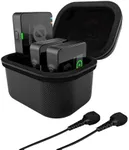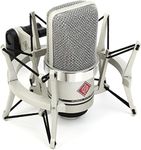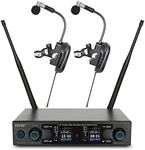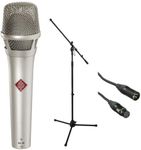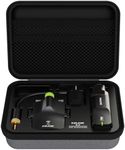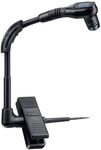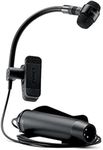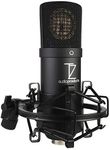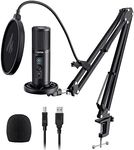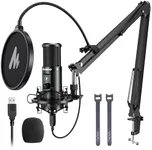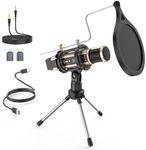Buying Guide for the Best Sax Microphone
Choosing the right microphone for your saxophone can significantly enhance your performance and recording quality. The right microphone will capture the true essence of your instrument's sound, ensuring that every note is clear and vibrant. When selecting a saxophone microphone, consider the environment in which you'll be using it, the type of sound you want to capture, and how you plan to use the microphone (live performance, studio recording, etc.). Here are some key specifications to consider when choosing a saxophone microphone.Type of MicrophoneThere are several types of microphones, including dynamic, condenser, and ribbon microphones. Dynamic microphones are durable and handle high sound pressure levels well, making them suitable for live performances. Condenser microphones are more sensitive and provide a wider frequency response, which is ideal for studio recordings. Ribbon microphones offer a warm, vintage sound but are more delicate. Choose a dynamic microphone for live performances due to its durability and ability to handle loud sounds. Opt for a condenser microphone if you are recording in a studio and want to capture detailed nuances of your saxophone's sound.
Polar PatternThe polar pattern of a microphone determines how it picks up sound from different directions. Common polar patterns include cardioid, omnidirectional, and figure-8. Cardioid microphones pick up sound primarily from the front, reducing background noise, which is great for live performances. Omnidirectional microphones capture sound from all directions, providing a more natural sound but picking up more ambient noise, suitable for studio settings. Figure-8 microphones capture sound from the front and back, useful for recording duets or ensembles. For live performances, a cardioid pattern is ideal to minimize feedback and background noise. For studio recordings, an omnidirectional or figure-8 pattern can capture a more natural and full sound.
Frequency ResponseFrequency response refers to the range of frequencies a microphone can capture. A flat frequency response means the microphone captures all frequencies equally, while a tailored response emphasizes certain frequencies. Saxophones produce a wide range of frequencies, so a microphone with a wide and flat frequency response (20 Hz to 20 kHz) is ideal for capturing the full sound of the instrument. If you want to emphasize certain aspects of your saxophone's sound, such as the brightness or warmth, look for a microphone with a tailored frequency response that highlights those frequencies.
SensitivityMicrophone sensitivity indicates how well a microphone can pick up quiet sounds. Higher sensitivity microphones are better at capturing subtle nuances but may also pick up more background noise. Lower sensitivity microphones are less likely to pick up background noise but may miss some of the finer details of your playing. For studio recordings, a higher sensitivity microphone can capture the full range of your saxophone's sound, including subtle dynamics. For live performances, a lower sensitivity microphone can help reduce feedback and background noise.
Mounting OptionsMounting options refer to how the microphone can be attached to your saxophone or positioned in relation to it. Clip-on microphones attach directly to the saxophone, providing consistent sound capture regardless of movement. Stand-mounted microphones offer more flexibility in positioning but may require you to stay relatively still. Choose a clip-on microphone for live performances to ensure consistent sound capture as you move. For studio recordings, a stand-mounted microphone allows for more precise positioning to achieve the desired sound.
